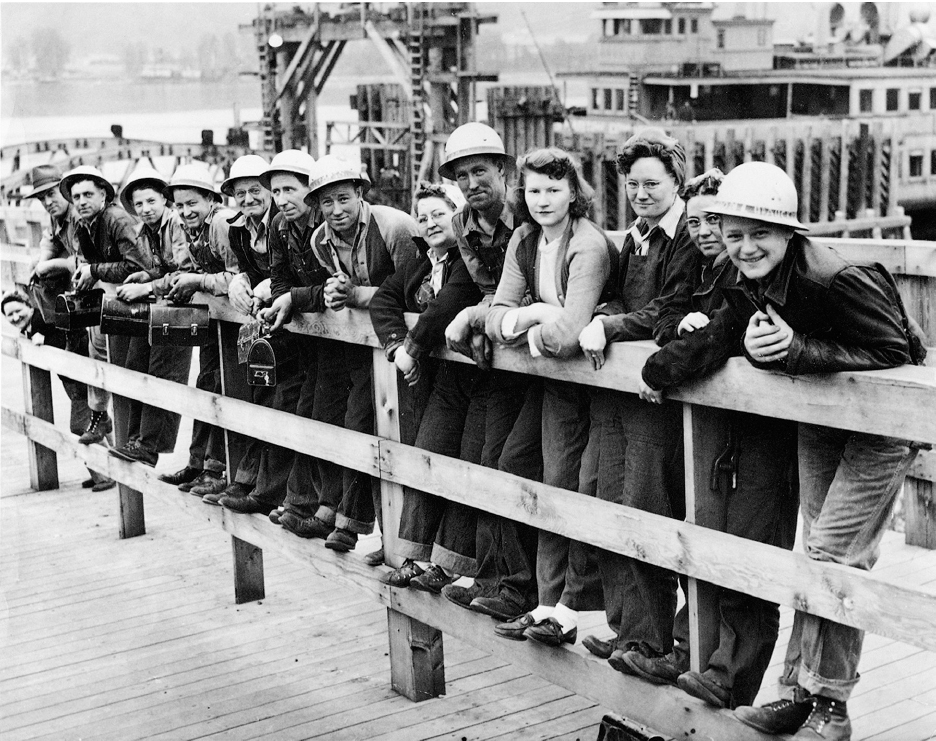America’s History: Printed Page 782
America: A Concise History: Printed Page 710
America’s History: Value Edition: Printed Page 690
“For the Duration”
Spurred by both government propaganda and a desire to serve the war cause, people on the home front took on wartime responsibilities. They worked on civilian defense committees, recycled old newspapers and scrap material, and served on local rationing and draft boards. About twenty million backyard “victory gardens” produced 40 percent of the nation’s vegetables. Various federal agencies encouraged these efforts, especially the Office of War Information (OWI), which disseminated news and promoted patriotism. The OWI urged advertising agencies to link their clients’ products to the war effort, arguing that patriotic ads would not only sell goods but also “invigorate, instruct and inspire” citizens (Thinking Like a Historian).
Popular culture, especially the movies, reinforced connections between the home front and the war effort. Hollywood producers, directors, and actors offered their talents to the War Department. Director Frank Capra created a documentary series titled Why We Fight to explain war aims to conscripted soldiers. Movie stars such as John Wayne and Spencer Tracy portrayed heroic American fighting men in numerous films, such as Guadalcanal Diary (1943) and Thirty Seconds over Tokyo (1945). In this pretelevision era, newsreels accompanying the feature films kept the public up-to-date on the war, as did on-the-spot radio broadcasts by Edward R. Murrow and Mary Marvin Breckenridge, the first female radio correspondent for CBS.
For many Americans, the major inconvenience during the war years was the shortage of consumer goods. Beginning in 1942, federal agencies subjected almost everything Americans ate, wore, or used to rationing or regulation. The first major scarcity was rubber. The Japanese conquest of Malaysia and Dutch Indonesia cut off 97 percent of America’s imports of that essential raw material. To conserve rubber for the war effort, the government rationed tires, so many of the nation’s 30 million car owners put their cars in storage. As more people walked, they wore out their shoes. In 1944, shoes were rationed to two pairs per person a year. By 1943, the government was rationing meat, butter, sugar, and other foods. Most citizens cooperated with the complicated rationing and coupon system, but at least one-quarter of the population bought items on the black market, especially meat, gasoline, cigarettes, and nylon stockings.
